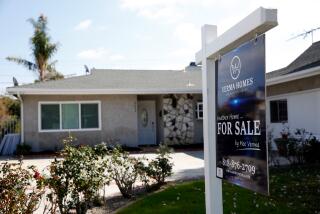Pricing Your Home
Your home’s asking price is one of the first pieces of information that buyers will want to know about your property. Price it too high and you’ll scare them away. If it’s too low you risk losing money. In order to price your home correctly, you’ll have to become educated about your local real estate market. Doing so will allow you to set an asking price that will compete favorably against other comparable homes. But don’t worry, it’s easy to do if you just follow these simple steps:
1. Know the Competition: Visit real estate websites and drive through your local area to search for homes for sale that are similar to yours in size, number of bedrooms & bathrooms, lot size and square footage. Educate yourself about their asking prices and, especially for condos, calculate the price per square foot. Trulia.com will do most of this work for you and allows you to print out a list of comparable homes, but you’ll also want to visit Realtor.com and ForSaleByOwner.com to get a more complete list of available homes on the market.
2. Visit Open Houses: Now that you know what’s on the market, visit as many open houses as you can in order to find out how your home compares to others. Your goal is to learn as much about those homes as possible, such as upgrades and renovations to the kitchen, bathrooms and bedrooms.
3. Learn About Recently Sold Properties: Your next step in educating yourself about the local market is learning how much homes have sold for in the recent past. Home sale information is public information and can be found a number of ways. Your county clerk’s office and/or local town hall can provide you with this data, but the internet has made the task even easier. Trulia.com and Zillow.com each have a “Recently Sold” feature that will list all information about properties that have sold near any given address.
4. Get a Starting Point: For a simple, cost-effective way to get a ballpark range of how much your home is worth, consider getting an Automated Valuation Model (AVM). Similar to a real estate agent’s Comparative Market Analysis, an AVM will compare your home to similar nearby recently sold properties. The AVM won’t know if your home has an upgraded kitchen, finished basement or new roof, etc., but it will give you a suggested range to price your home. The AVM will also provide you with a list of nearby recently sold properties.
5. Evaluate Your Research: Now that you have information about homes currently on the market, data on recently sold properties and a price range, you have all the data you need to compare your home to others in your neighborhood and local area. Evaluate the information you have learned and ask yourself how your home stacks up with the others. Be honest. What condition is it in and how does in compare in location, features and aspects like a remodeled master bathroom?
6. Live in the Now: One of the biggest mistakes sellers are doing in today’s market is pricing their home at price points of one, two or three years ago. The national median home price has dropped more than 15% from April 2007 to April 2008 (in markets in CA, FL and AZ the median home price has fallen by more than 20 percent!), and those that price their home too long will just see it sit on the market. The homes that are selling today are those that are priced competitively to other homes are on the market, providing buyers with the sense that they are getting “a good deal.”
7. Take Advantage of Being “For Sale By Owner”: Owners of homes being sold through a real estate agent will have to fork over expensive commission fees equal to 5-6% of their home’s sale price (or $18,000 for a $300,000 home). Or, in other words, the seller of that $300,000 home will only “pocket” $282,000. As a smart “for sale by owner” home seller, you won’t have that expense and -- depending on how quickly you want to sell -- you have the unique ability to price your home anywhere in that $282,000-$300,000 range and still come out ahead financially compared to sellers of similar homes. You’ll also be able to get more buyers as well because they’ll be attracted to your home’s asking price.
8. Set the Price: The time has come. You now have a complete picture of your real estate marketplace. Set the price using all the information you’ve learned through the above steps.
Congratulations! You have reached a major milestone in your home selling process. Not only have you arrived at an asking price, you have become an expert in your local real estate market. Prospective buyers will be impressed with your sense of knowledge and honest assessment of your home’s value, and you’ll be able to communicate about its strengths and weaknesses as compared to other homes in your neighborhood, town and area.
More to Read
Sign up for Essential California
The most important California stories and recommendations in your inbox every morning.
You may occasionally receive promotional content from the Los Angeles Times.






